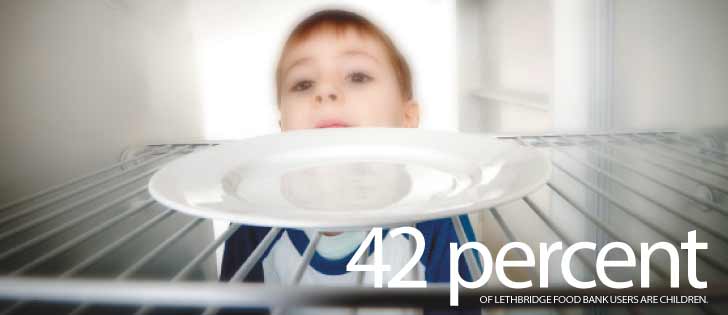Usage keeps growing | Program operators call on government to develop programs to alleviate poverty and child hunger
Food bank operators would like nothing better than to be out of a job.
Canada, among the world’s most prosperous nations, has a system of food banks that have become virtual fixtures in many communities. The Lethbridge region has two of them.
“Food banks sort of got started the same way the income tax got started,” said Lethbridge food bank board president John Usher.
“I think more people would like it to go away than food banks, but (the food bank) was created during some very difficult economic times and as a stopgap. It was privatized before they thought about privatization, but now it is welcomed as an alternative to actually taxing and creating public programming.”
Read Also

Farming Smarter receives financial boost from Alberta government for potato research
Farming Smarter near Lethbridge got a boost to its research equipment, thanks to the Alberta government’s increase in funding for research associations.
Usher told the Southern Alberta Council of Public Affairs Dec. 19 that food banks are mostly a North American phenomenon and speculated that the need has arisen because of tough economic times, social changes in family dynamics that have reduced support, and government abdication of responsibility for ensuring living wages are paid to workers.
Usher also addressed the opinion that food banks generate reliance by their users.
“It’s like when you’re raising children. You don’t want to completely shield them from the world because then they can’t deal with the world when they have to eventually do it on their own,” he said in an interview after his talk.
“And are we doing that? Are we treating some of the people that are in this system as if they were children and so they behave like children and they’re never really going to stand on their own two feet as long as we continue to do this?”
About 42 percent of Lethbridge food bank users are children, compared to 44 percent across Alberta and 36 percent across Canada.
Twenty-eight percent of Lethbridge food bank users are aboriginal, compared to 46 percent in Alberta and 11 percent Canada-wide.
Kelsey Janzen of the interfaith Food Bank Society of Lethbridge said 500 to 600 households, comprising 1,500 to 1,800 people, use her organization’s service each month. About 24 percent of them are employed and half rely on it year after year.
“Some of our food bank use is because people come to Alberta to find their future and if they don’t find it, they’re with us,” said Usher, who is a professor of organization theory at the University of Lethbridge and has studied food banks in other parts of North America.
He has found that food retailers sometimes consider food banks a good place to dispose of excess inventory, making them part of an overall system perpetuated for reasons other than supply to those in need.
However, the big concern is whether food banks serve as an “out” for government so that programs are not developed to address living wages and social programs.
“Where does that responsibility lie if food banks continue to take up that slack?” he said.
Increasing affordable housing, changing the rules for provincial social assistance and increasing the number of well-paying jobs would all improve the situation for those who can’t afford food, he said.
Janzen said the food bank has established a community garden and has programs teaching food bank users about nutrition and food preparation. These are ways the food bank aims to assist users and reduce their need to use its services.


















